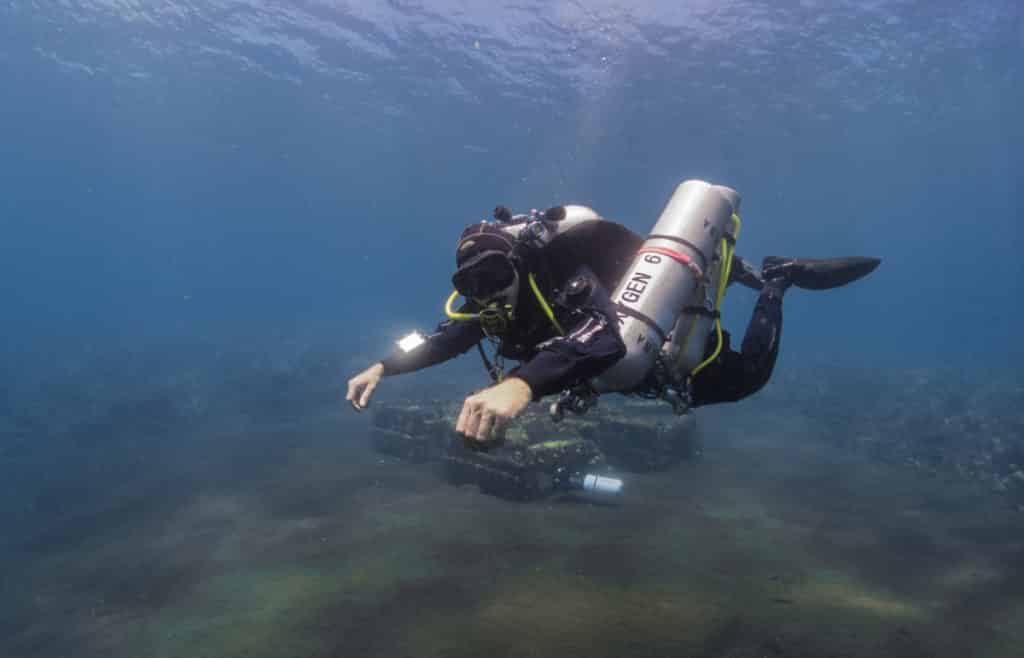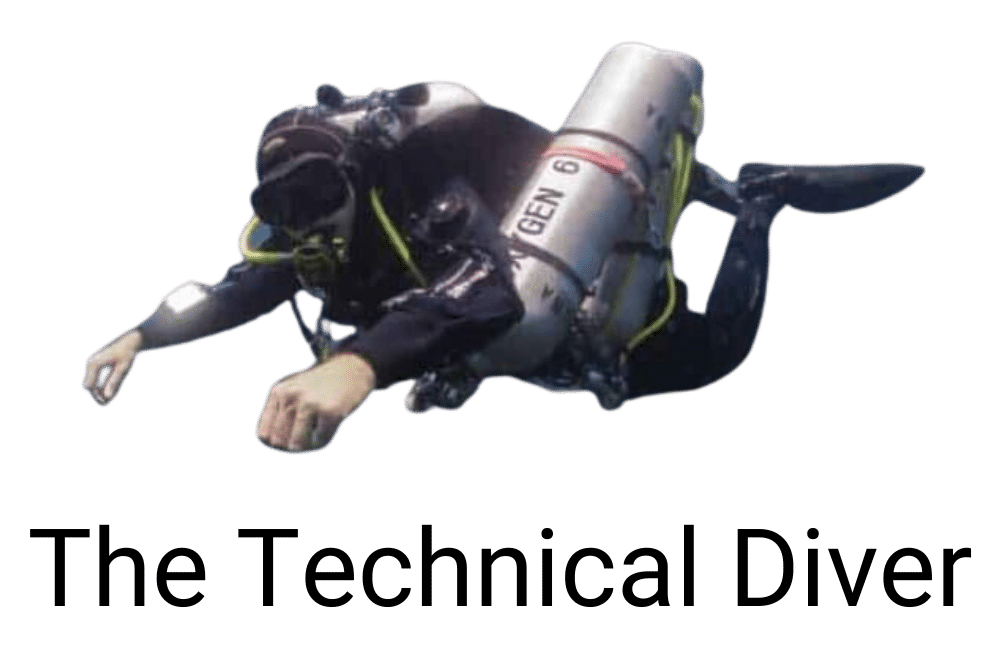Trimix Diving

Trimix Diving
Successful trimix diving requires a high level of competence; now is not the time to start learning how to back kick or have to work hard to maintain deco stops. Divers that are ready to become trimix qualified should be well-practised at decompression diving in the 40-55m range, and have a good understanding of dive planning and gas management.
A large chunk of a trimix course is spent understanding the different considerations for using varying amounts of helium and oxygen in their gas mixes. Theory covers narcosis management, oxygen limits, gas density, and how this fits together with the dive planning.
Narcosis management
If you’ve done a lot of extended-range diving on air, you will be astonished by just how much clearer your brain is on Trimix. Adding helium replaces some of the nitrogen. This can lower the level of narcosis considerably. In fact, trimix would ideally be the gas of choice for any dive deeper than 30m (100ft. The problem is, it’s not cheap. Unless you are pretty well off, you won’t be undertaking a lot of regular trimix diving on open circuit. That’s the truth. The only divers who do are instructors. Their gas is paid for by their students.
In spite of this, the Trimix course is still a worthwhile undertaking. It will increase your knowledge and make you a more competent, safer diver.
Preparation for Rebreather Training
Another factor to consider is rebreather diving. Divers that undertake a lot of deep diving, usually do so using a rebreather. The long-term savings on Trimix can be huge. But before going down the CCR route, it’s worthwhile to do open circuit trimix first. It will help with rebreather training; you’ll already have a grounding of the procedures required for trimix diving. This will enable you to concentrate on the rebreather, rather than having to learn complex decompression diving procedures as well.
Course options
All the major diving agencies run trimix courses. Raid’s Deco 60 course and TDI’s course will certify you to dive to 60m, and IANTD has two options- Normoxic trimix diver, which qualifies you to 60m (200ft), and normoxic trimix +, which certifies you to 70m (230ft).
The materials of each agency are obviously different, and the agency rules that the instructor has to work within vary slightly. But the principles and procedures for in-water training will be exactly the same.
Dive Raid Deco 60 prerequisites
- 18 years old
- Deco 50 diver or equivalent, rescue diver, O2 provider, deep diver, nitrox diver
- Have logged 65 hours or 100 dives on open circuit
- Have logged 10 decompression dives
- Have logged 20 hours between 30 and 50 metres
IANTD Normoxic Trimix Diver prerequisites
- 18 years old
- IANTD Advanced EANx Diver or equivalent
- Proof of 100 logged dives, 30 deeper than 27 msw (90ft)
IANTD Normoxic + prerequisites
- 18 years old
- IANTD Advanced EANx Diver or equivalent
- Proof of 100 logged dives, 30 deeper than 27 msw (90ft)
